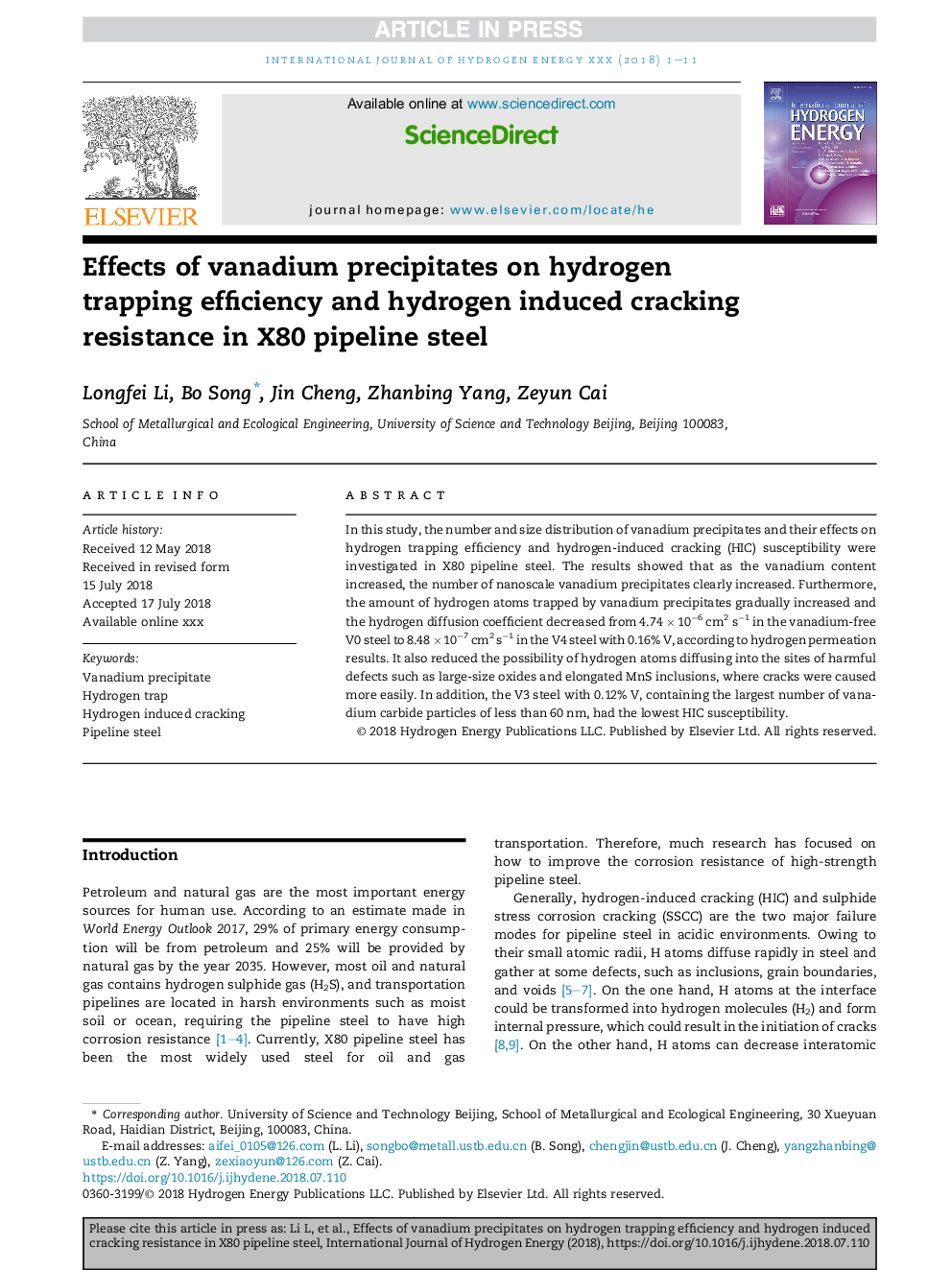| Article ID | Journal | Published Year | Pages | File Type |
|---|---|---|---|---|
| 8948276 | International Journal of Hydrogen Energy | 2018 | 11 Pages |
Abstract
In this study, the number and size distribution of vanadium precipitates and their effects on hydrogen trapping efficiency and hydrogen-induced cracking (HIC) susceptibility were investigated in X80 pipeline steel. The results showed that as the vanadium content increased, the number of nanoscale vanadium precipitates clearly increased. Furthermore, the amount of hydrogen atoms trapped by vanadium precipitates gradually increased and the hydrogen diffusion coefficient decreased from 4.74Â ÃÂ 10â6Â cm2Â sâ1 in the vanadium-free V0 steel to 8.48Â ÃÂ 10â7Â cm2Â sâ1 in the V4 steel with 0.16% V, according to hydrogen permeation results. It also reduced the possibility of hydrogen atoms diffusing into the sites of harmful defects such as large-size oxides and elongated MnS inclusions, where cracks were caused more easily. In addition, the V3 steel with 0.12% V, containing the largest number of vanadium carbide particles of less than 60Â nm, had the lowest HIC susceptibility.
Related Topics
Physical Sciences and Engineering
Chemistry
Electrochemistry
Authors
Longfei Li, Bo Song, Jin Cheng, Zhanbing Yang, Zeyun Cai,
